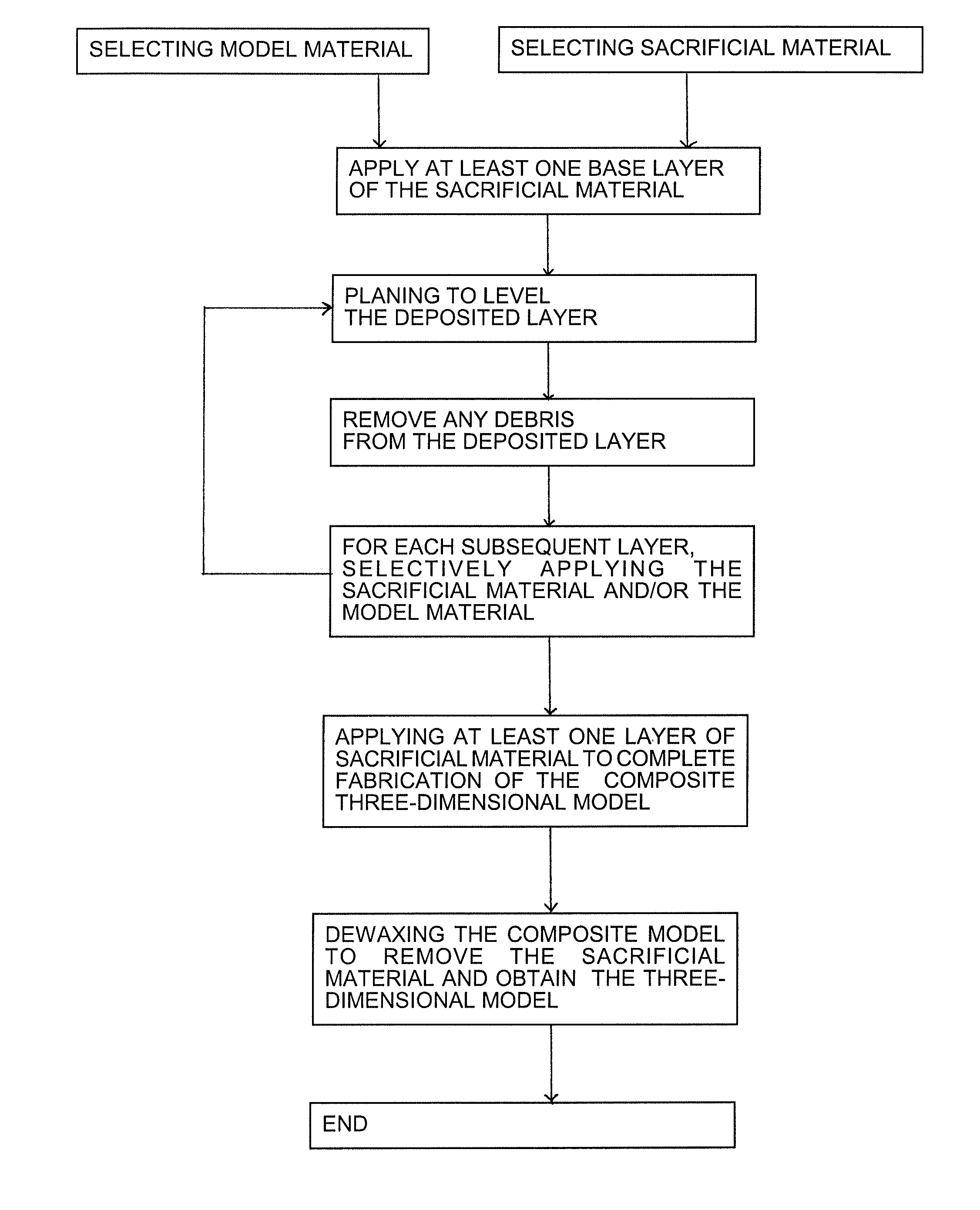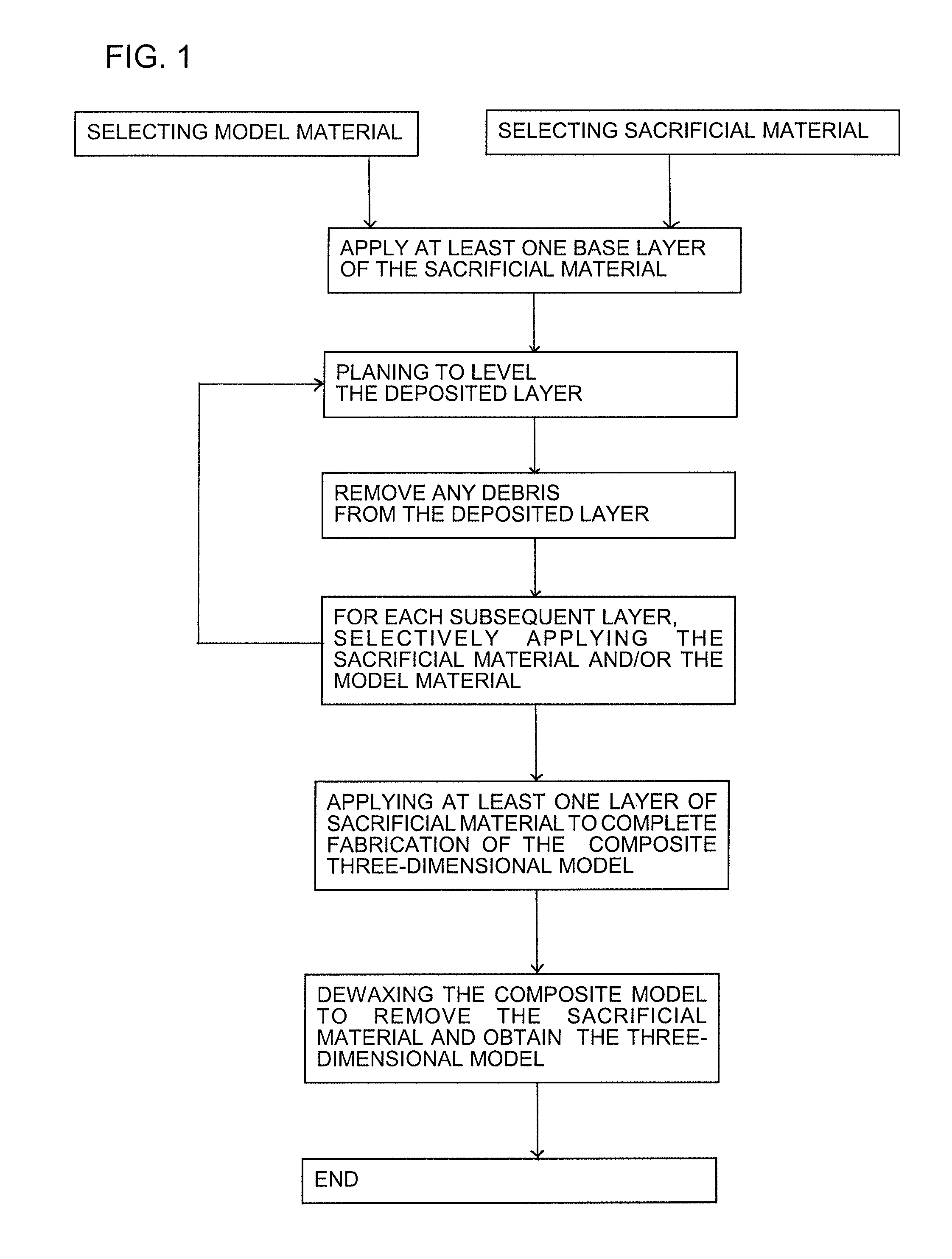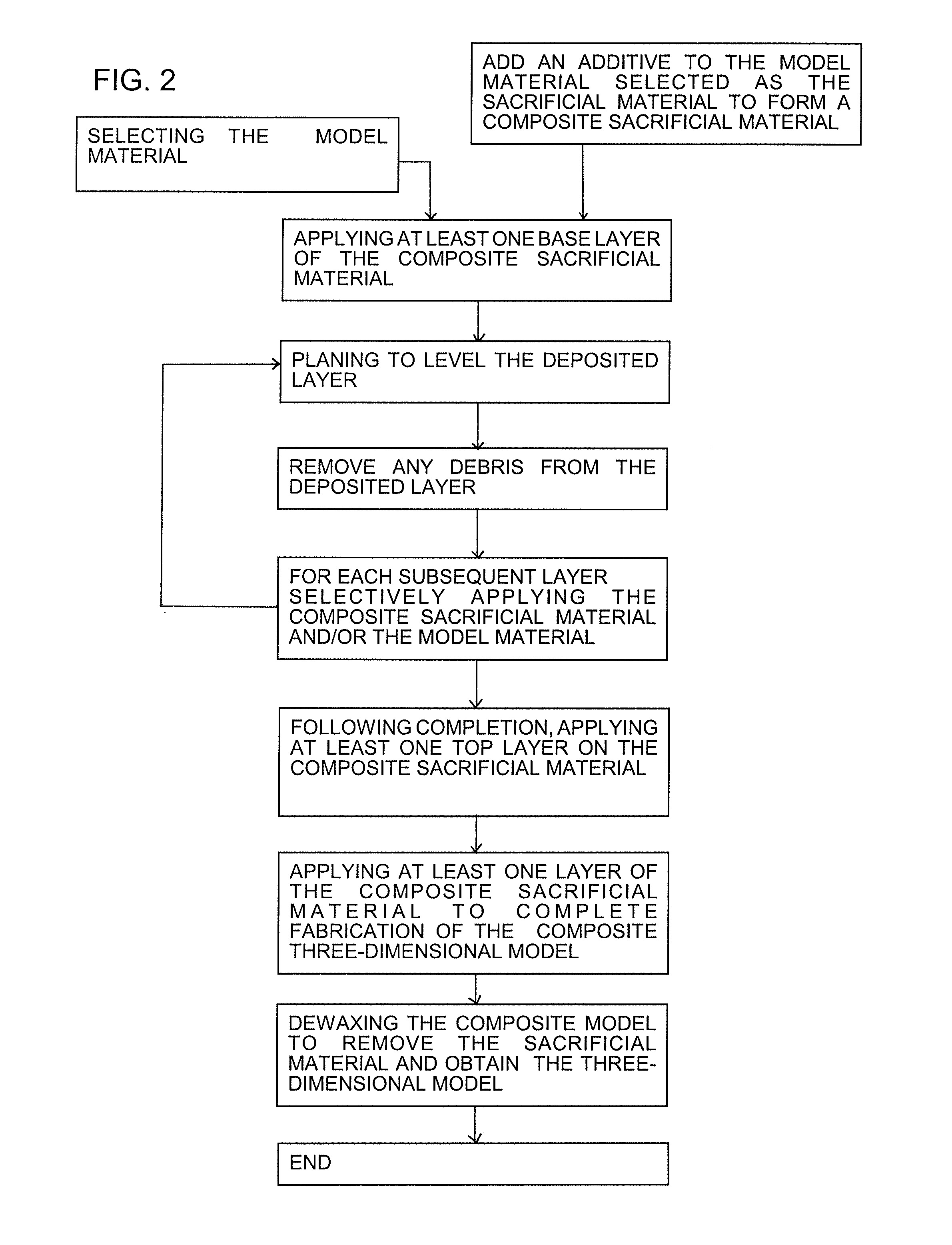Method for reducing stress in three dimensional model
- Summary
- Abstract
- Description
- Claims
- Application Information
AI Technical Summary
Benefits of technology
Problems solved by technology
Method used
Image
Examples
Embodiment Construction
[0035]As described in the following, the present invention is generally directed to a method and a system for fabricating three-dimensional models by construction of a composite three-dimensional model formed of successive layers of at least one model material, comprising the model, and successive layers of at least one sacrificial material, comprising a supportive shell around and for the model. As this process is conventional, for completeness only a brief discussion concerning the same will now be provided. This brief discussion will thereafter be followed by a detailed discussion concerning the inventive aspects of the present invention.
[0036]As generally shown in FIG. 1, the three-dimensional model making process generally comprises first applying at least one layer of the sacrificial material, more preferably a plurality of layers of the sacrificial material are initially sequentially deposited onto the support table or some other build platform and this layer or these layers ...
PUM
| Property | Measurement | Unit |
|---|---|---|
| Fraction | aaaaa | aaaaa |
| Percent by mass | aaaaa | aaaaa |
| Particle size | aaaaa | aaaaa |
Abstract
Description
Claims
Application Information
 Login to View More
Login to View More - R&D
- Intellectual Property
- Life Sciences
- Materials
- Tech Scout
- Unparalleled Data Quality
- Higher Quality Content
- 60% Fewer Hallucinations
Browse by: Latest US Patents, China's latest patents, Technical Efficacy Thesaurus, Application Domain, Technology Topic, Popular Technical Reports.
© 2025 PatSnap. All rights reserved.Legal|Privacy policy|Modern Slavery Act Transparency Statement|Sitemap|About US| Contact US: help@patsnap.com



